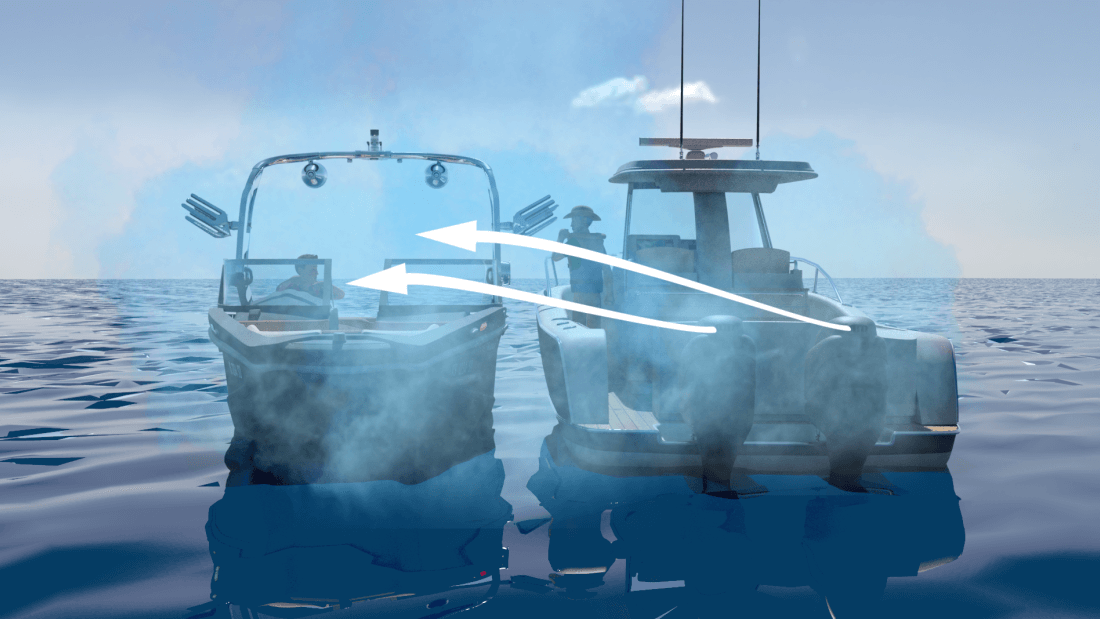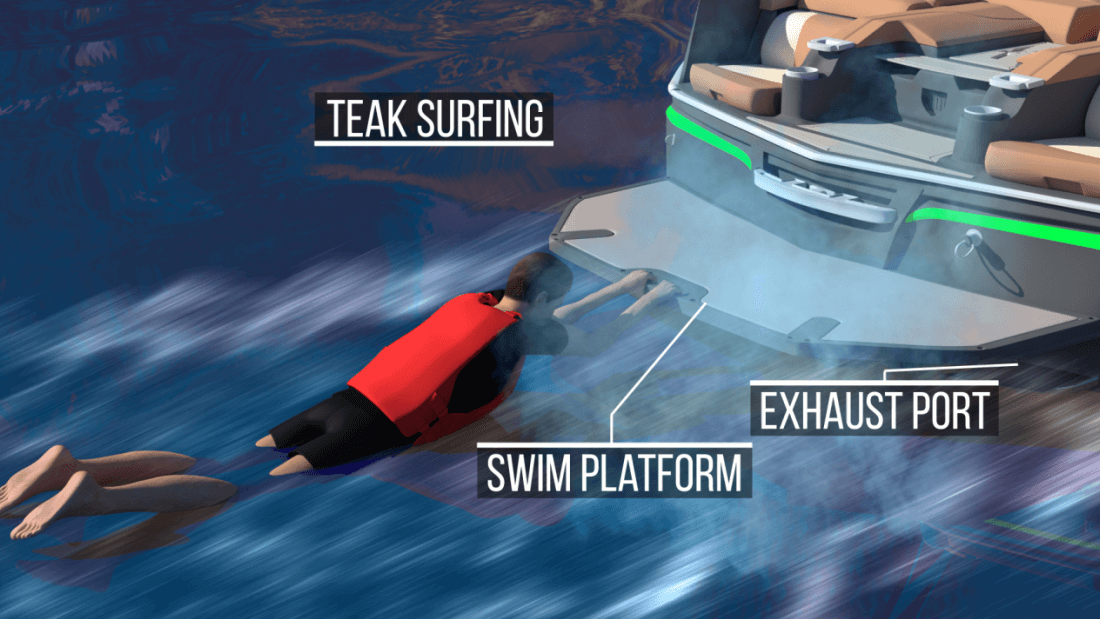Carbon monoxide poisoning on your boat
What's carbon monoxide poisoning?
A deadly gas produced when carbon-based fuels are burned causes carbon monoxide poisoning.
Carbon monoxide is an odorless and tasteless gas. It enters the bloodstream through the lungs and displaces the oxygen.
What are warning signs of carbon monoxide poisoning?
- Nausea
- Headache
- Dizziness
- Mental confusion
- Unconsciousness
The symptoms can be mistaken for seasickness or the flu. If someone displays these symptoms, place them in fresh air immediately.
What is the first aid of carbon monoxide poisoning?
- get outside to fresh air
- call 911
- breath in pure oxygen through a mask

Where can you get carbon monoxide poisoning from a boat?
- Gasoline-powered engines on boats, including the engine, generators, cooking equipment, and heating appliances.
- Teak surfing or platform dragging.
- Exhaust from other boats docked or anchored.
- Repairing the boat's engine (working near the engine compartment or engine while it is running).
- Slow or idle speeds while traveling downwind, which allows exhaust to accumulate in cabins, cockpits, or other enclosed areas.
What is teak surfing?
A thrilling and risky trend in boating emerges as individuals holding on to the swim platform (often made of teak) and get towed through the water. In one twist, the "surfer" will let go of a boat while a wake builds up, surfing the wave created by the boat.

What danger exists when teak Surfing?
Termed "Teak Surfing", this practice is a sure way to induce CO poisoning. NEVER swim near the stern of your boat with the engine(s) running.
How to protect yourself from carbon monoxide poisoning on a boat?
To protect yourself, maintain and inspect the boat's engine and exhaust system. Keep forward hatches open to provide air flow. Install a carbon monoxide detector. Be aware of other boats near you that may be running a generator or idling for long periods while docked. Their carbon monoxide can get into your boat too.
